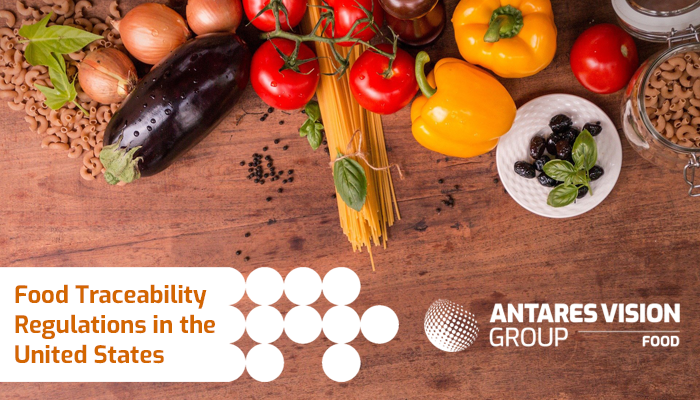The U.S. Food and Drug Administration (FDA) is orchestrating the construction of a more robust, technology-driven approach to food traceability and safety. And it’s happening as the food industry is undergoing major change, including scores of new foods being introduced to the market, rising consumer demand for more information about the food they buy, the development of more sophisticated production and delivery methods, and a growing push for digitization of the supply chain.
As regulations in the United States continue to evolve, manufacturers, wholesalers, distributors, and retailers need to keep a finger on the pulse of the latest developments. Today, we’ll help with a quick rundown of what’s happened with food traceability over the last year.
Food traceability regulations in the United States: 2020-present
On September 23, 2020, the FDA published “Requirements for Additional Traceability Records for Certain Foods” on its Food Traceability List. Referred to as the “Food Traceability Proposed Rule,” it’s part of the FDA’s New Era of Smarter Food Safety Blueprint and aims to standardize the data elements and information required to rapidly and accurately identify foods that may be causing illness. It defines additional recordkeeping requirements for businesses that manufacture, process, pack, or hold foods on the FDA’s Food Traceability List, which must establish and maintain records containing key data elements (KDEs) associated with specific critical tracking events (CTEs).
In January 2021, the FDA made clarifying modifications to the Food Traceability List and published a detailed FAQ that answered commonly asked questions that emerged following the announcement of the Proposed Rule. In February 2021, the comments period for the modifications closed. The FDA has until November 2022 to finalize it.
More about the New Era of Smarter Food Safety Blueprint
These initiatives are part of the FDA’s New Era of Smarter Food Safety. Announced in April 2019, it envisions a modern approach to ensuring food safety through digital, tech-enabled traceability.
The New Era of Smarter Food Safety Blueprint, announced in July 2020, outlines the FDA’s methodology for achieving its traceability and safety goals. It’s based on the following four pillars, which leverage a range of technologies, analytics, business models, modernization, and values as its building blocks:
1. Tech-enabled food traceability
A supply chain that includes paper-based recordkeeping and yields insufficient data makes it difficult to track and trace foods rapidly. Fast, accurate food traceability is essential to safeguarding consumers’ health — and your brand reputation and bottom line.
For example, modernized food traceability that leverages the latest technologies and integrates expanding data streams empowers supply chain stakeholders to identify an outbreak and trace a contaminated food product’s origin within minutes — or even seconds — and be proactive about getting the product off of shelves.
2. Smarter tools and approaches for prevention and outbreak response
In addition to better food traceability, the FDA wants to ensure the root cause of an outbreak or contamination can be easily identified to support a prevention-based approach. To do this, stakeholders need to incorporate new knowledge while continuously assessing how they can make processes and communications more effective and efficient. As more data becomes available, the use of predictive analytics tools becomes increasingly important to predict when a significant food event may occur. With this information, manufacturers can prevent a contaminated food products from entering the supply chain or target efforts to remove a potentially contaminated product from the market.
3. New business models and retail modernization
As the industry continues to find new ways to produce and distribute food, the FDA is seeking to explore new approaches in ensuring food traceability and safety. This includes:
- Educating supply chain actors on the importance of food safety issues
- Adapting FDA oversight to ensure the safety of novel ingredients, new foods, and new food production methods
- Advancing the safety of foods sold in traditional retail establishments
4. Food safety culture
The FDA wants to encourage an environment of support for a stronger food safety culture on farms, in food facilities, and in homes. If the food industry does not commit to embracing food traceability and safety, real improvements will be difficult to achieve.
Final thoughts
We can be certain of two things when it comes to food traceability regulations in the United States: they’re going to keep evolving and they’re not going away. The good news is advancements in technology are making it profoundly easier — and even more affordable — to ensure food traceability across the entire supply chain. Yes, the FDA’s proposed requirements technically apply only to items on the Food Traceability List, but the Agency is encouraging voluntary adoption of these practices industry-wide. Savvy food companies will see this as an opportunity to get involved early and be part of the process, helping to set the industry’s regulatory course while going a long way to secure their own business.
rfxcel can help you comply with U.S. food traceability regulations today, tomorrow — always. From raw ingredients to finished goods, our rfxcel Traceability System (rTS) offers end-to-end food supply chain traceability and visibility. Our rfxcel Integrated Monitoring (rIM) is a real-time traceability and supply chain visibility solution that helps you remotely monitor products in transit And our MobileTraceability app brings the power of rTS to every node of your operations, including places that have traditionally been “blind spots.” Contact us today to arrange a demo.





